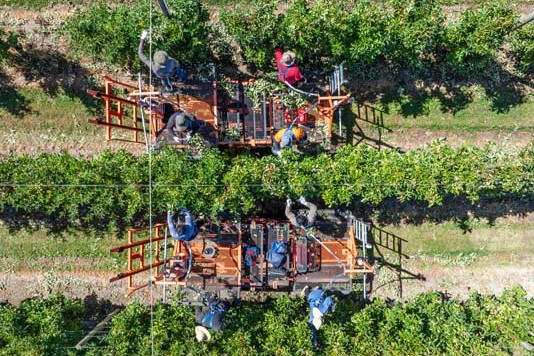The upcoming ban on live cattle exports is set to make life hard for calf rearers. Story by Karen Trebilcock.
THE VALUE OF SURPLUS FRIESIAN heifer calves will crash when live exports to China end early next year, managing director of Waikato-based live export company Genetic Development said.
“They’re making a big premium over the local market – 50 to 100% more.”
Demand was strong for the animals but the cut-off date of April 30, 2023, would make it hard for rearers.
“Spring 2022-born calves will have to have a top rearing programme to reach the required export weights by then.”
Chinese importers were frustrated by the impending ban and they saw it as a breach of the two countries’ Free Trade Agreement.
“The New Zealand industry supplies breeding stock by sea to China to very high standards with top results so to replace this trade will be difficult.
“There is a shortage of cattle in Australia and although Uruguay and Chile can supply some dairy stock, the sea voyage is twice as long from these countries so the risks for the animals increases.”
Despite the Government’s signalling of a transition period “to wind down the trade” following its announcement of the ban last year, shipments of live cattle from NZ to China have since increased.
Ministry for Primary Industries (MPI) figures show in 2021, 134,722 cattle, worth about $500 million, were exported either from Napier, New Plymouth or Timaru ports to China compared with 109,921 the year before.
That year included the temporary suspension of shipments after the loss of Gulf Livestock 1 in a cyclone in the East China Sea with the loss of 43 crew and 5867 cattle.
For the five years before then, 2015 to 2019, the highest number of cattle in any year was 40,221 which was in 2016. Destinations then also included the Philippines, Mexico and Vietnam as well as China.
Voyages have taken between 14 and 22 days. Deaths have decreased on shipments with this year the figure at 0.04% of all cattle exported, compared with last year’s 0.07% and 2020’s 0.12%. Some shipments in the past three years have recorded no deaths.
Until the end of July this year, 61,658 cattle have left for China in 10 different shipments with more likely, a MPI spokesperson said. Southern Australian International Livestock Services (SAILS) managing director Andy Ingle said China’s need for cattle would continue.
“It will be replaced by other exporting countries including Australia and some South American countries currently exporting and possibly new countries for supply will be opened by China to ensure their requirements are able to continue to be met,” he said.
The live animal export business exports from Australia, NZ, Uruguay, United States and Chile to markets including China, Russia and other CIS countries, Mexico, Japan, Turkey and Israel.
“The demand certainly looks to remain strong from China moving forward for the medium term in our view.”
Although NZ and Australia were leaders in animal welfare standards for livestock exports, South American countries currently supplying China did not adhere to the same codes.
“Therefore, it really comes back to the individual exporting companies operating from those markets and their own internal quality control standards in particular with regards to vessel transportation.”
LIC chief executive David Chin said the company was not prepared to fill the gap caused by the ban of live cattle exports.
“We don’t have a distributor in China and we don’t have any plans to export our genetics there.”
LIC’s dairy genetics were not in demand there due to the country’s import regulations and their different farming systems. “Our international business is focused on markets that are more suited to our pasture-based genetics and which will deliver a good return back to our farmer shareholders in New Zealand, such as South America and Europe.”





